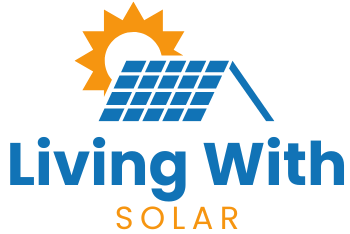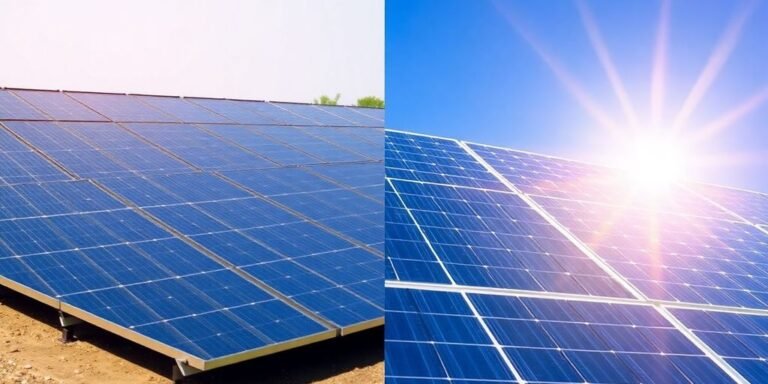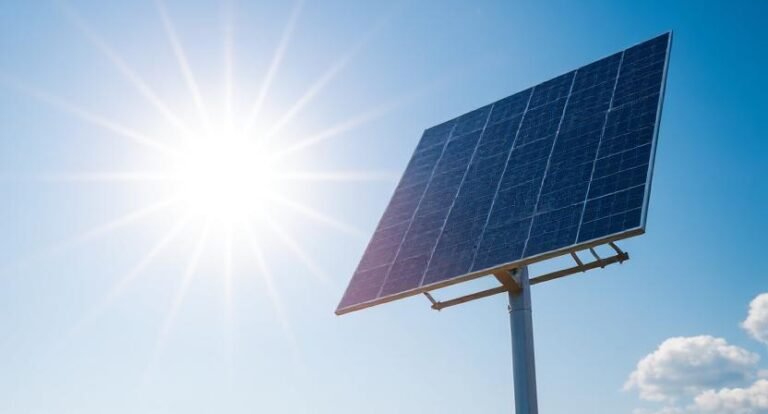Contemplating getting solar energy? You are not the only one. Given the increased costs of energy and heightened concern regarding environmental issues, people are increasingly asking this question: Is spending money on solar energy beneficial?
I will explain the advantages and disadvantages of solar energy in detail. This will involve the reality of how solar panels operate, as well as the savings and expenses that one could reasonably expect. Additionally, we will discuss issues ranging from cloudy days to upfront costs, as well as some of the new innovations in solar technology. Moreover, we will analyze how solar energy compares to other clean sources of energy.
This guide is designed to provide you with all the information you could need regarding solar energy, whether you are a homeowner wanting to lower your electric bills, a curious observer interested in renewable energy, or a primary consumer trying to offset their expenses.
Solar Energy 101: The Fundamentals of Solar Power
How Solar Panels Work
The heart of the solar system is whether photovoltaic (PV) panels or Solar Panels. They produce electricity by catching sunlight and turning it into power. This takes place because of the photovoltaic effect, in which sunlight strikes the solar cells in panels, generating an electric field across layers of silicon. This electric field makes electricity flow, creating power. It’s interesting to see how a crude concept can fuel our homes and gadgets.
Types of Solar Energy Systems
There are different kinds of solar power systems that are available, which have been developed to cater to different energy needs. The most common are:
Grid-tied systems: These are plugged into an existing electricity grid so power can be pulled from the grid to your home and excess power pushed to the grid.
Off-grid systems: Ideal for remote locations, these systems are not connected to the utility grid and are typically powered by a battery bank.
Hybrid systems: Mixed systems, combining some grid-tied and off-grid elements, that retain energy in batteries and have access to the public grid as well.
The Inverter Role in Solar Power
Inverters are essential components of solar power systems and work to convert the direct current (DC) generated by solar panels into alternating current (AC), the power form used in most homes. The electricity produced by the panels is useless for household appliances without inverters. There are several types of inverters, such as string inverters, microinverters, and power optimizers, with varied benefits according to the system design.
Having an idea of what solar power is allows for a better appreciation of the technology that turns sunlight into electricity. It really is incredible to think that with just a few panels and some clever engineering, we can draw upon an almost infinite energy source.
Advantages of Solar Energy
Environmental Benefits of Solar Power
The first thing that comes to mind when I think about solar energy is what solar does for our planet. Solar energy is a form of clean energy and does not release any greenhouse gases into the atmosphere. That also means it doesn’t add to air pollution, which is a huge win for our health and the health of the planet.
By transitioning to solar power, we can dramatically reduce these harmful emissions and improve health worldwide. And solar power doesn’t need water to turn it into electricity, unlike some other power sources; that is another green bonus.
Savings and Financial Incentives
One of the hippest things about solar is saving coin. Adding solar panels might lower your electricity bills, and in some towns, you could be paid for creating your extra power. In some states, you can sell your solar renewable energy certificates (SRECs) for extra cash.
Over time, these savings will accumulate, which will make solar one of the soundest financial choices that you will ever make. Oh, and we can’t forget about the financial incentives and tax credits that are out there, helping to defray the startup costs of putting in a solar system.
Energy Independence and Security
There is an independence that comes with solar energy. You don’t depend as much on the grid, so you’re less susceptible to blackouts or price swings in energy. Solar panels can be installed just about anywhere, enabling people and nations to generate power on their own. This enhances energy security and minimizes the dependence on fossil fuel imports. It’s almost like having a mini power plant sitting in your home, offering the peace of mind that comes from knowing you’re doing something to help shape a more sustainable future.
Going solar is not just about the cost savings or the ability to be good stewards of our planet, but also taking control of our energy needs and making a positive change in our world.
Challenges and Limitations of Solar Energy
High Initial Costs and Investment
Let’s get serious for a moment, having solar panels installed has a big upfront price tag. It’s buying a new car or putting a down payment on a house. You’re talking about a big wad of cash. This upfront capital investment is likely the number one barrier most people who are looking to go solar face.
Of course, there are release options and some incentives, but if you are buying, you need to be in it for several years to get the financial payback. It’s not something you do in haste without some very careful financial planning.
Intermittency and Weather Dependence
Solar power is nice and all, but it gets cloudy sometimes. If you are from a part of the country where the weather is fickle, you know what I am talking about. Cloud cover, rain, or even a little too much shade from the trees can interfere with how much energy you get. And at night? Forget about it. This is where energy storage comes in, but again, storage too can be expensive. We are talking here about batteries that can store energy to keep the lights on when the sun is not shining. So, because solar is so great, it’s also pretty unreliable on its own.
Limitations of Space and Place
Solar panels aren’t suitable for every roof. If your house is obscured by trees or if your roof faces the wrong way, you may be out of luck. And solar panels require space. Lots of it if you plan to power an entire house. It’s not just hitting some panels up there and calling it a day.
Very few people do.”You have to consider the placement and how much space you really have. For people living in tightly packed urban areas or with minimal rooftop real estate, this can be a deal-breaker.
Solar power may have its challenges, but when you compare the benefits, it is well worth the effort. It’s a moving target in terms of technology; the limitation of today is not one of tomorrow.
Getting to know the advantages and disadvantages of solar energy is very important so that you can make the right decision if ever you’re considering of investing in solar power. It’s about weighing the pros against the cons to make the best decision, right?
Solar Energy Technology Innovations
Advances in Solar Panel Output.
For one thing, solar panels have improved substantially over the years, and that’s a big deal. Today’s panels convert roughly 15% to 20% of the light that hits them into electricity. Not so long ago, those numbers were lower, so it is encouraging to see this improvement. These advances translate into more power from the same amount of sunlight, making solar energy more competitive for a wide r range of people. Some are even built to weather the elements, lasting up to 30 years while losing little efficiency.
Innovations in Energy Storage Solutions
Energy storage is where things start to get especially interesting. Storing solar energy for use when the sun doesn’t shine has been a costly and technologically challenging goal. But that is getting easier now, thanks to better battery technologies.
Take lithium-ion batteries, for example: They are increasingly popular because they provide more power for a lower price. There are also newer technologies, such as flow batteries, which may offer long-duration and scalable storage. That is important if solar is to become an available source of power, day in and day out.
Emerging Trends in Solar Technology
The solar sector is abuzz with new trends and new products. I think one interesting and exciting area is flexible thin-film solar cells. These panels can be installed in locations that wouldn’t permit traditional panels, such as a curved surface. The other trend is the emergence of solar technology into building materials.
These days, solar roof tiles are possible. That means buildings could create their power without the need to install separate solar panels. These developments are making solar power more accessible and flexible than ever before.
While we keep taking the envelope of what can currently be achieved with solar technology, it’s important to remember that the future of energy isn’t just sustainability – it’s about flexibility and creativity too.
Solar Power Environmental Impact
Reduction in Greenhouse Gas Emissions
When leveraging solar power, one of solar’s great wins is its capacity to reduce greenhouse gas emissions. Solar power, unlike fossil fuels, doesn’t emit dangerous levels of noxious gases during operation. That makes it a far cleaner option to tackle climate change. We can capture and use the sun’s rays to make electricity without adding to the world’s air pollution or global warming.
Recycling and Disposal of Solar Panels
But solar power is not without challenges. Solar farms can also occupy a lot of land, jeopardizing local ecosystems. For example, a solar plant generating electricity for 1,000 homes could require approximately 32 acres of land. Such land use may result in habitat loss of wildlife and alterations in local biodiversity. Rooftop solar panels are a more space-efficient option. “They’re not available to everyone.
Disposal and recycling of solar panels
With the development of solar technology, recycling and disposal have become problematic issue. Solar panels have a lifetime of about 25-30 years, so when they make it to the end of this lifespan, they will need to be disposed of in a way that can help prevent damage to the environment.
These panels contain materials such as metals and glass, which need to be handled carefully. If not properly managed, that material can leach into the environment as pollution. Strong recycling plans are key to avoiding these pitfalls and to ensuring solar remains an environmentally friendly source of power.
Although solar power itself is an environmental hazard in some ways, its potential to lower emissions of greenhouse gases makes it an attractive possibility for a less-polluted world. With proper management of land use and advancements in recycling technology, we can address these challenges effectively.
Economic Aspects of Solar Energy Usage
Job Creation in the Solar Industry
Let’s talk jobs. Solar power is not just environmentally friendly, it’s also a job creator. If you stop to think about it, to put in solar panels, maintain them…you even have to have them manufactured, and people have to be employed.
Indeed, the solar industry was one of the fastest-growing sources of employment. Even folks who are not tech-savvy are in on it. Electricians, salespeople, and even marketers can have a job. The ripple effect is massive, and local economies are gaining from this jobs boom.
Influence on Property Values
All right, let’s talk property values. If you’ve ever wondered whether those panels on your roof that glisten in the sun are worth it, take heart: The federal government says yes. Well, they do. Houses with solar tend to sell more quickly and for more money. It’s a little eco-sticker that potential buyers like. And then there’s research that shows that people also love saving money on their utility bills, so that’s a major selling point. So in a sense, it’s possible that going solar could be among the very best home improvement projects you undertake.
Government Policies and Subsidies
We have to consider the role of the government here. They’ve done a fair amount to promote the adoption of solar through policy and subsidies. These are credits that can dramatically reduce the upfront cost of solar installations. While tax credits to rebates, you can earn money back as you go green with solar power. It’s a win-win where homeowners get a break, the environment gets a rest, and homeowners who choose to install the panels get a financial break.
Harnessing the power of the sun isn’t just about tapping the sun; it’s about transforming the economy. The economic impact, from job creation to property value increases and even government incentives, is huge and promising. And as we take up this renewable source, we aren’t only lighting up our homes, we’re lighting up our financial future.
Comparing Solar Energy with Other Renewable Sources
When people talk about renewable energy, solar and wind are the first to come to mind. Compared with other renewable sources, solar energy is characterized by the advantages of site flexibility of installation, such as roofs and open land. This versatility enables wider penetration and integration of any concepts and scenarios, which makes it an attractive option in the circulatory economy of renewable energy.
Wind energy, on the other hand, tends to have a more favorable energy-out-per-area ratio, especially in areas where the wind is relatively constant. The installation of windmills, though, has certain geographical and environmental limitations because it requires open space and has an adverse effect on wildlife, too.
Solar vs. Hydroelectric Power
Waterpower has long been a dependable renewable energy source. It gives a reliable source of energy than solar and it is not reliant on the availability of sunlight. But the environmental costs of hydroelectric power can be high, from changing water ecosystems to endangering fish populations. Solar panels have much lower environmental impact, but scale for scale, they are much more space-consuming. Hydroelectric plants are also confined to places with enough water traffic and flow, but solar can be deployed more easily in various sites, which is why solar power seems more universal.
Solar vs. Biomass Energy
Another form of renewable power with which solar competes is biomass energy, where organic materials are transformed into energy. Although biomass can be created from waste, and so should be sustainable, producing it often means burning waste and emitting pollution.
Solar, by contrast, generates electricity without emitting anything when running. Unlike solar, which is intermittent and weather-dependent, biomass has the potential to deliver energy more continuously. The decision of solar or biomass would be determined by local resources and environmental factors, while clean working conditions and low emissions of solar are attractive for low carbon.
Frequently Asked Questions
What are the pros of solar power?
Clean and renewable solar energy saves electricity for your family. Low maintenance. It also lowers our carbon footprint and potentially increases property value.
What’s the downside of solar energy?
Yes, solar panels are costly to install, can be space-consuming, and are dependent on sunlight. They also require a backup or storage system for cloudy days.
Do solar panels work on cloudy or cold days?
Solar panels can still produce electricity, but why? During cold weather and on cloudy days, however, their productivity may be reduced. The snow can even be helpful by reflecting sunlight onto the panels.
What is the lifespan of solar panels?
Solar panels are typically built to last between 25 to 30 years. They’re reliable and don’t require much maintenance, other than regular cleaning.
Will solar energy save me money?
SOLAR AND BILLS Yes, you can save with solar, but be wary of scams. The initial investment in installation can be balanced by cumulative savings.
What kind of financial support exists to put solar panels on my house?
Plenty of governments give residents money in some form — be it a tax credit or a rebate — to help cover the cost of adding solar panels to their roof. It might be worth seeing what is offered in your area.





